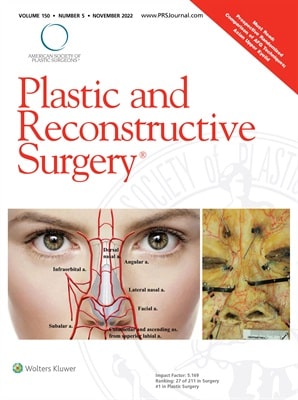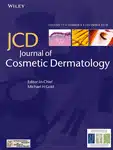
Lower Nose Arterial Plexus and Implications for Safe Filler Injections (2022)
Title : Lower Nose Arterial Plexus and Implications for Safe Filler Injections
Researcher : Tansatit, T., Jitaree, B., Uruwan, S., Rungsawang, C.
Abstract : Background: The lower nose has abundant blood supply; however, nasal tip necrosis still occurs following filler injections. This study revealed the complicated pattern of the arterial supply of the lower nose.
Methods: The arterial pattern of the lower nose was studied in 40 cadavers using conventional dissections and translucent modified Sihler staining.
Results: Two arterial rings were connected in a figure of eight. The upper ring (nasal arterial circle) consisted of the lateral nasal and the subalar arteries encircling the nasal tip and alae. The lower ring (arterial plexus of the upper lip) was more important because of the contribution of the facial and superior labial arteries. This specific feature had not been mentioned elsewhere.
Conclusion: Understanding this specific feature of the blood supply of the lower nose is essential for aesthetic physicians to perform the appropriate techniques during filler injection procedures in the nasal and perioral regions.
Link to Academic article: DOI: 10.1097/PRS.0000000000009649
Journal : Plastic and Reconstructive Surgery, 2022, 150(5),
Bibliography : Tansatit, T., Jitaree, B., Uruwan, S., & Rungsawang, C. (2022). Lower Nose Arterial Plexus and Implications for Safe Filler Injections. Plastic and Reconstructive Surgery,150(5), 987E–992E. DOI: 10.1097/PRS.0000000000009649

The analgesic efficacy of anterior femoral cutaneous nerve block in combination with femoral triangle block in total knee arthroplasty: a randomized controlled trial(2021)
Title : The analgesic efficacy of anterior femoral cutaneous nerve block in combination with femoral triangle block in total knee arthroplasty: a randomized controlled trial
Researcher : Kampitak, W., Tanavalee, A., Tansatit, T., …Songborassamee, N., Vichainarong, C.
Abstract : Background: Ultrasound-guided femoral triangle block (FTB) can provide motor-sparing anterior knee analgesia. However, it may not completely anesthetize the anterior femoral cutaneous nerve (AFCN). We hypothesized that an AFCN block (AFCNB) in combination with an FTB would decrease pain during movement in the immediate 12 h postoperative period compared with an FTB alone.
Methods: Eighty patients scheduled to undergo total knee arthroplasty were randomized to receive either FTB alone (FTB group) or AFCNB with FTB (AFCNB + FTB group) as part of the multimodal analgesic regimen. The primary outcome was pain during movement at 12 h postoperatively. Secondary outcomes included numeric rating scale (NRS) pain scores, incidence of surgical incision site pain, intravenous morphine consumption, immediate functional performance, patient satisfaction, and length of hospital stay.
Results: The NRS pain scores on movement 12 h postoperatively were significantly lower in the AFCNB + FTB group than in the FTB group (mean difference: –2.02, 95% CI: –3.14, –0.89, P < 0.001). The incidence of pain at the surgical incision site at 24 h postoperatively and morphine consumption within 48 h postoperatively were significantly lower (P < 0.001), and quadriceps muscle strength at 0° immediately after surgery was significantly greater in the AFCNB + FTB group (P = 0.04).
Conclusions: The addition of ultrasound-guided AFCNB to FTB provided more effective analgesia and decreased opioid requirement compared to FTB alone after total knee arthroplasty and may enhance immediate functional performance on the day of surgery.
Keywords: Arthroplasty; Knee; Nerve block; Peripheral nerves; Postoperative pain; Ultrasonography.
Link to Academic article: DOI: https://doi.org/10.4097/kja.21120
Journal : Korean Journal of Anesthesiology, 2021, 74(6).
Bibliography : Kampitak, W., Tanavalee, A., Tansatit, T., Ngarmukos, S., Songborassamee, N., & Vichainarong, C. (2021). The analgesic efficacy of anterior femoral cutaneous nerve block in combination with femoral triangle block in total knee arthroplasty: a randomized controlled trial. Korean Journal of Anesthesiology, 74(6), 496–505. DOI: https://doi.org/10.4097/kja.21120

The crest injection technique for glabellar line correction and the paracentral artery (2021)
Title : The crest injection technique for glabellar line correction and the paracentral artery
Researcher : Tansatit, T., Uruwan, S., Rungsawang, C.
Abstract : The glabella is a zone that carries a high risk of blindness after performing filler injections. The arteries beneath the glabellar lines were investigated by meticulous dissections in 30 geriatric embalmed cadavers with latex injections into the arterial system. The results showed that the supratrochlear artery, a direct branch of the ophthalmic artery, ascended from the muscular layer of the medial eyebrow along the medial canthal vertical line of the intercanthal vertical zone (53 in 60 hemifaces, or 88%). The dominant single paracentral artery from the radix artery was found within the radix vertical zone (eight out of 30 glabellae, or 27%). Among these, the dominant paracentral artery was near the midline in two cadavers and arose along the radix vertical line in six cadavers. The dominant paracentral artery may be the cause of ocular complications during injections of glabellar lines between the medial eyebrows, especially at the radix vertical lines. The supratrochlear artery might cause ocular complications when an injection is performed close to the medial eyebrows. Pinching to create a skin crest and evert glabellar line for a precise injection is recommended to temporarily occlude the paracentral artery.
Link to Academic article: DOI: 10.1097/GOX.0000000000003982
Journal : Plastic and Reconstructive Surgery – Global Open, 2021, 9(12).
Bibliography : Tansatit, T., Uruwan, S. & Rungsawang, C.,(2021). The crest injection technique for glabellar line correction and the paracentral artery. Plastic and Reconstructive Surgery – Global Open, 9(12), e3982. DOI: 10.1097/GOX.0000000000003982

Ultrasound evaluation of arterial anastomosis of the forehead (2018)
Title : Ultrasound evaluation of arterial anastomosis of the forehead
Researcher : Tansatit, T., Phumyoo, T., Jitaree, B., Sawatwong, W., Rungsawang, C., Sahraoui, Y.M.E.,… Lee, J.H.
Abstract : Background: Color Doppler ultrasound has a potential role as an imaging guide in aiding filler injections which are blinded procedures.
Objective: This study investigated the forehead arteries and provided insight into their anastomoses. This was performed by challenging their function to provide blood through these anastomoses when the main artery was temporary occluded by compression.
Methods: Three arteries were identified on each side of the forehead, the supratrochlear, the supraorbital and the superficial temporal arteries. Under ultrasound monitoring, each target artery and corresponding anastomosis was studied separately by compressions performed in a sequential and accumulative manner.
Results: Data from the current study imply that accidental cannulation of either the supratrochlear artery or the supraorbital artery can cause ophthalmic artery embolization in every case recorded. If the frontal branch of the superficial temporal artery is cannulated, the chance of blindness as a complication occurs in one fifth of volunteers. Anastomosis between both sides of the terminal branches of ophthalmic arteries creates the possibility of bilateral ocular complications when accidental cannulation occurs at one of these branches, especially the supratrochlear artery. Thus, injury to the supratrochlear artery carries a greater risk of complication than the supraorbital artery.
Conclusion: These findings emphasize that the chance of ocular complication is less when accidental cannulation occurs at the superficial temporal artery compared with injury to the supratrochlear or the supraorbital arteries as the terminal branches of the ophthalmic artery. Ultrasound can assist in the identification and evaluation of all the arteries at risk, thus avoiding the occurrence of vascular complications.
Link to Academic article: https://doi.org/10.1111/jocd.12755
Journal : Journal of Cosmetic Dermatology, 2018, 17(6).
Bibliography : Tansatit, T., Phumyoo, T., Jitaree, B., Sawatwong, W., Rungsawang, C., Jiirasutat, N.,…Lee, J. H. (2018). Ultrasound evaluation of arterial anastomosis of the forehead. Journal of Cosmetic Dermatology, 17(6), 1031–1036.